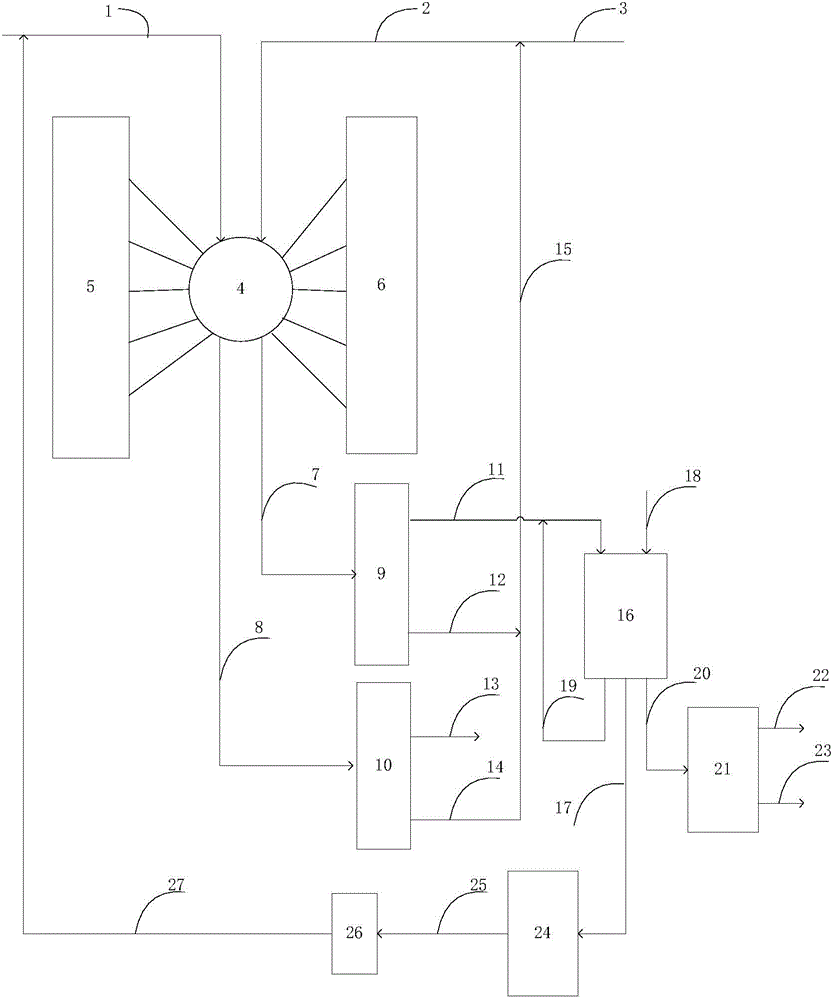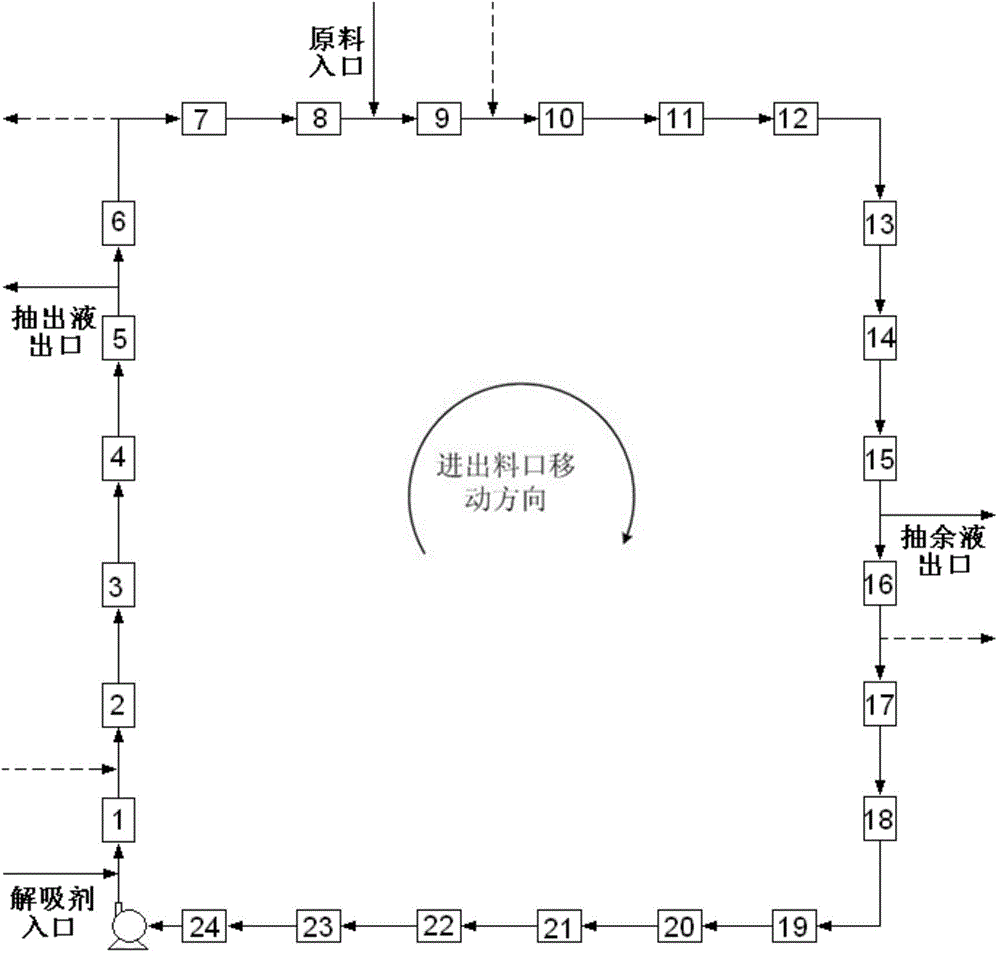Method for adsorbing and separating paraxylene and ethylbenzene from C8 aromatic components
An adsorption separation and p-xylene technology, applied in the direction of adsorption purification/separation, isomerization hydrocarbon production, organic chemistry, etc., can solve the problems of increased loss of aromatics, low conversion rate of ethylbenzene, harsh operating conditions, etc., to achieve improved Purity and yield, reducing the difficulty of separation, reducing the effect of energy consumption
- Summary
- Abstract
- Description
- Claims
- Application Information
AI Technical Summary
Problems solved by technology
Method used
Image
Examples
preparation example Construction
[0032] The preparation method of the above-mentioned isomerization catalyst is as follows: after mixing the zeolite and the binder, adding a peptizer and kneading, extruding, drying and roasting. The peptizer is an inorganic acid, preferably nitric acid. The drying temperature after extruding is 90-120°C, and the roasting temperature is 450-650°C.
[0033] The temperature for the isomerization of o-xylene and m-xylene under non-hydrogenation conditions is 290-350°C, the pressure is 0.2-0.6MPa, and the mass space velocity of the feed is 1-5h -1 .
[0034] The isomerization of the absorbing matter described in the present invention can also be carried out under the condition of facing hydrogen, and the catalyst used for the hydrogen isomerization can further support platinum in the above-mentioned acidic catalyst, and the platinum-loaded catalyst is based on the above-mentioned acidic catalyst. The platinum content calculated as a basis is 0.1 to 1.0% by mass, preferably 0.1 t...
example 1
[0040] Prepare the adsorbent used in liquid phase adsorption separation.
[0041] Mix X zeolite (produced by Shanghai Fuxu Molecular Sieve Co., Ltd.) and kaolin at a mass ratio of 92:8, roll into a ball, and roast at 520°C for 6 hours to take spherical particles with a particle size of 0.15-1.0 mm, and use barium nitrate solution For ion exchange, the liquid / solid volume ratio of the solution to the adsorbent is 10, the concentration of the barium nitrate solution is 0.5 mol / liter, and the exchange degree calculated according to the residual sodium content after the exchange is 95 mol%. After the exchange, the solid was dried at 100°C for 3 hours and activated at 220°C for 2 hours to obtain Adsorbent A, in which the BaX content was 93.41% by mass and the kaolin content was 6.59% by mass.
example 2
[0043] Prepare the adsorbent used in gas phase pressure swing adsorption separation.
[0044] According to the method described in ZL99126289.1, the raw powder of TS-1 molecular sieve with hollow crystal grains was prepared. Mix the TS-1 molecular sieve raw powder with a hollow grain structure and kaolin at a mass ratio of 94:6, roll into balls, take spherical particles with a particle size of 0.5-1.0 mm, dry at 90°C for 4 hours, and bake at 520°C for 6 hours. Adsorbent B was prepared in hours, which contained 94.2% by mass of hollow structure TS-1 molecular sieve and 5.8% by mass of kaolin.
PUM
| Property | Measurement | Unit |
|---|---|---|
| length | aaaaa | aaaaa |
| particle diameter | aaaaa | aaaaa |
Abstract
Description
Claims
Application Information
 Login to View More
Login to View More - R&D
- Intellectual Property
- Life Sciences
- Materials
- Tech Scout
- Unparalleled Data Quality
- Higher Quality Content
- 60% Fewer Hallucinations
Browse by: Latest US Patents, China's latest patents, Technical Efficacy Thesaurus, Application Domain, Technology Topic, Popular Technical Reports.
© 2025 PatSnap. All rights reserved.Legal|Privacy policy|Modern Slavery Act Transparency Statement|Sitemap|About US| Contact US: help@patsnap.com



